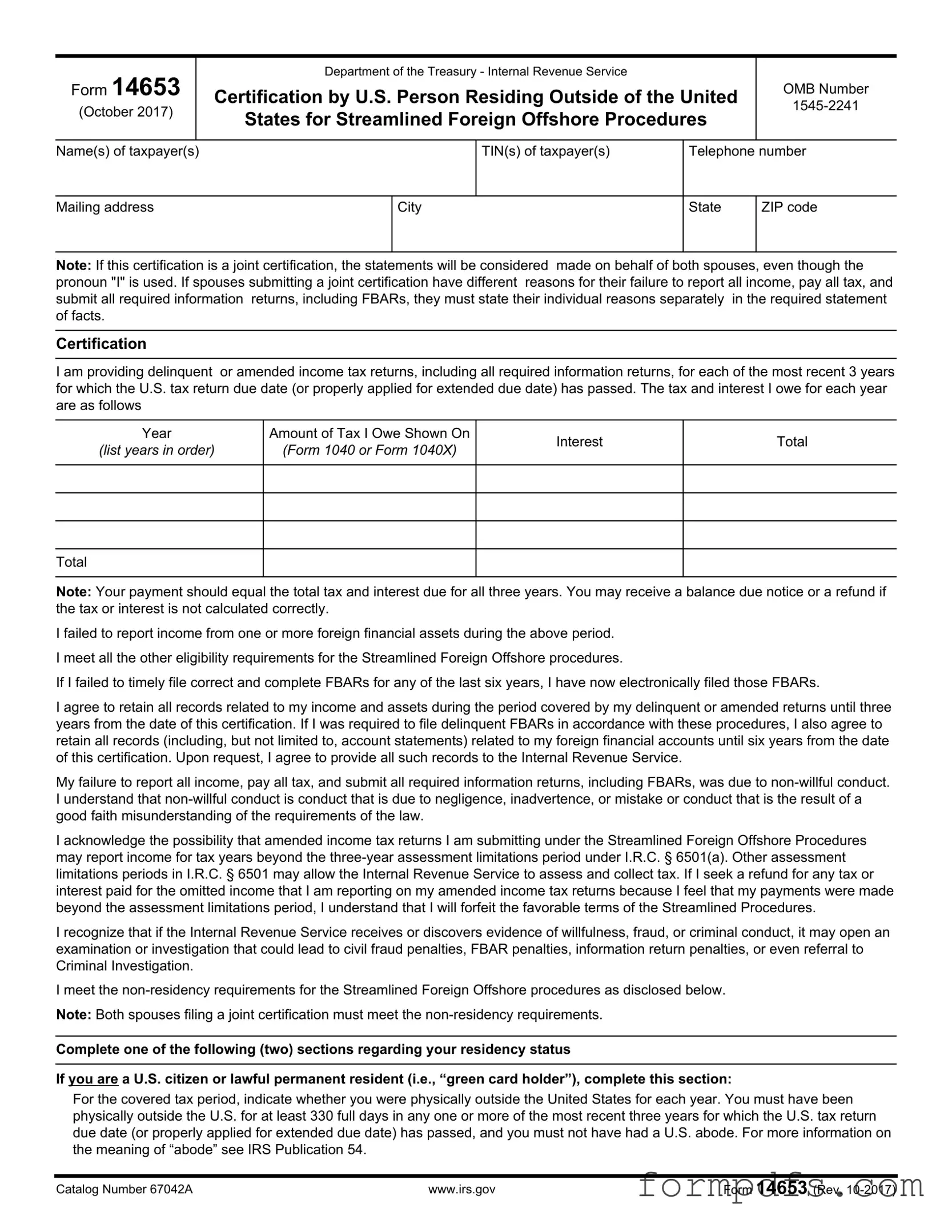What is Form 14653?
Form 14653 is a certification used by U.S. persons residing outside the United States who want to participate in the Streamlined Foreign Offshore Procedures. This form allows individuals to report previously unreported income and file delinquent tax returns without facing penalties, provided they meet specific eligibility requirements.
Who should use Form 14653?
This form is intended for U.S. citizens and lawful permanent residents who have failed to report all income, pay all taxes, and submit required information returns, including Foreign Bank Account Reports (FBARs). It is particularly relevant for those who have lived outside the U.S. for at least 330 days in one or more of the last three tax years.
What are the eligibility requirements for using Form 14653?
To qualify for the Streamlined Foreign Offshore Procedures, you must meet several criteria. You need to have been physically outside the U.S. for at least 330 full days in one of the last three tax years and not have a U.S. abode. Additionally, your failure to report income must be due to non-willful conduct, meaning it was not intentional or due to negligence.
What information do I need to provide on Form 14653?
On Form 14653, you must provide personal information, including your name, taxpayer identification number (TIN), and contact details. You will also need to list the years for which you are filing delinquent returns, the amounts owed, and the reasons for your failure to report income. A detailed narrative explaining your situation is crucial for your submission to be considered complete.
What happens if I don't meet the requirements for Form 14653?
If you do not meet the eligibility requirements, your submission may be considered incomplete, and you could face penalties for failing to report income or file returns. The IRS may also investigate your case further if they suspect willful conduct, which could lead to civil or criminal penalties.
How long do I need to keep records related to my submission?
You are required to retain all records related to your income and assets for three years from the date of your certification. If you have filed delinquent FBARs, you must keep those records for six years. This includes account statements and any documentation related to your foreign financial accounts.
Can I file Form 14653 jointly with my spouse?
Yes, spouses can file a joint certification using Form 14653. However, both spouses must meet the non-residency requirements. If each spouse has different reasons for their failure to report income, they must provide separate statements of facts detailing their individual circumstances.
What are the potential consequences of submitting false information on Form 14653?
Submitting false information can lead to severe penalties, including civil fraud penalties and possible criminal charges. It is crucial to provide accurate and complete information to avoid complications with the IRS.
